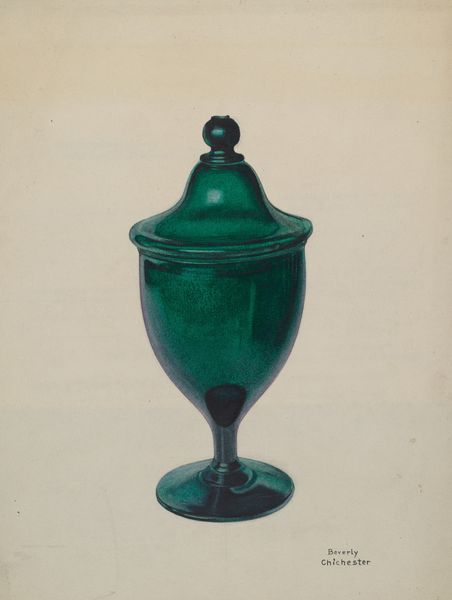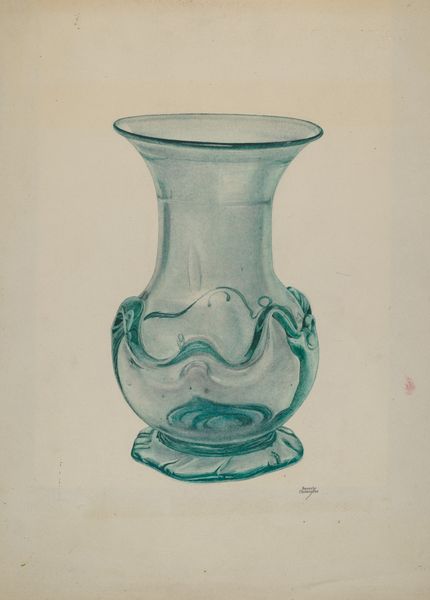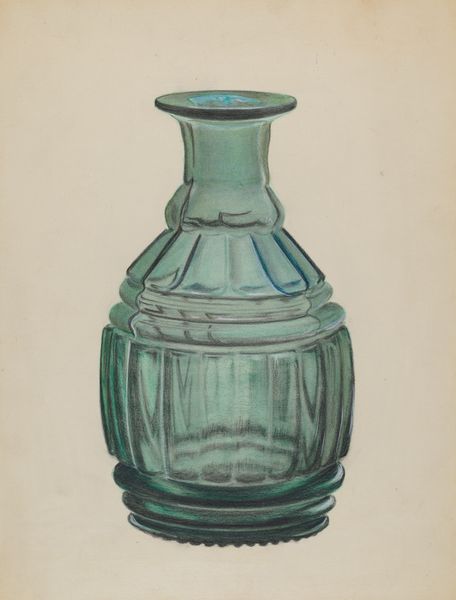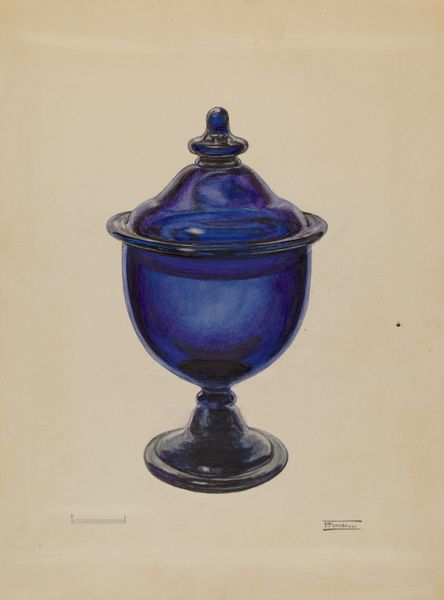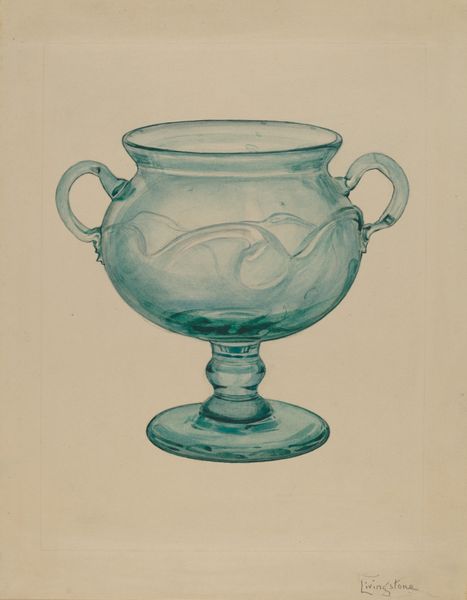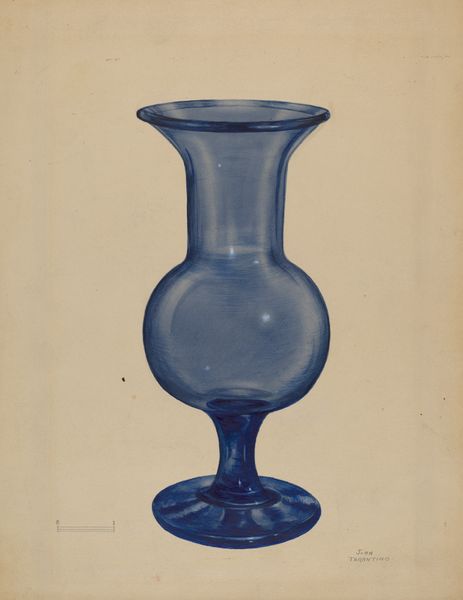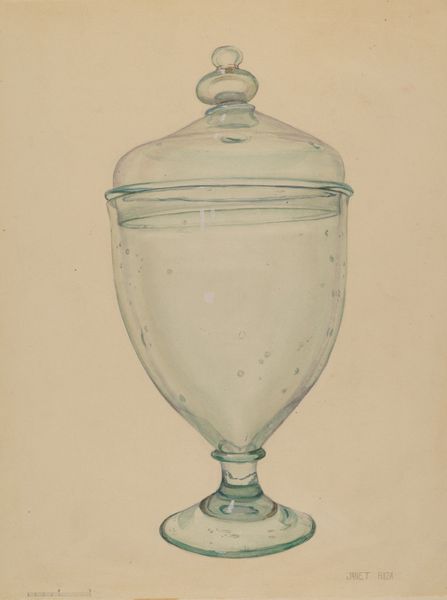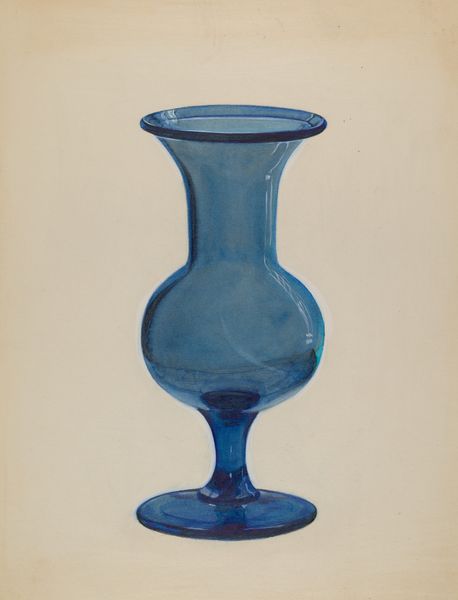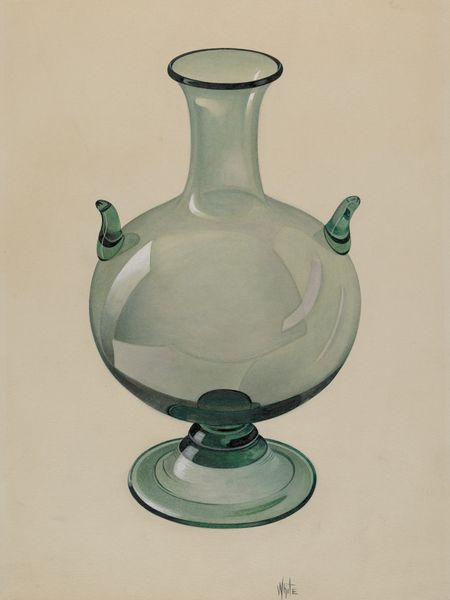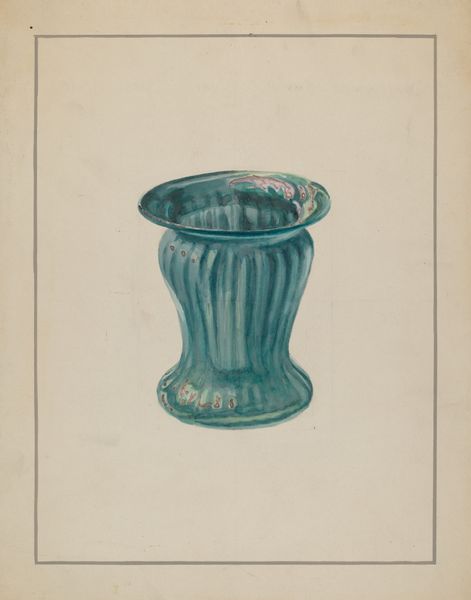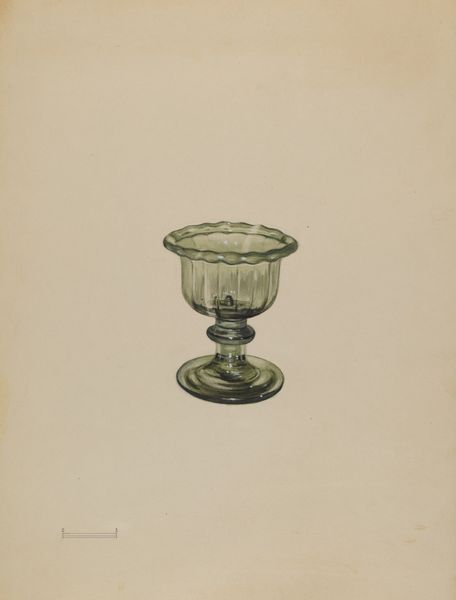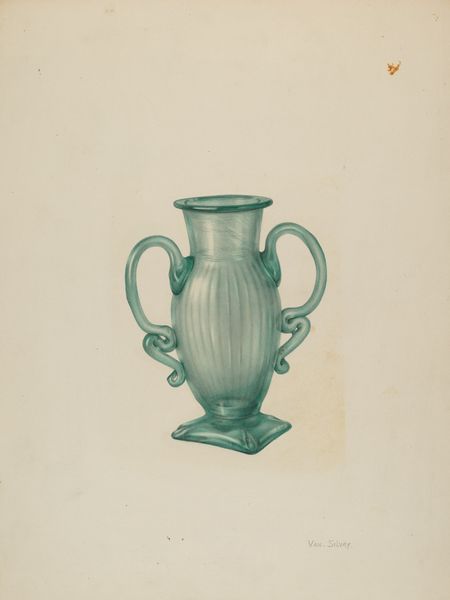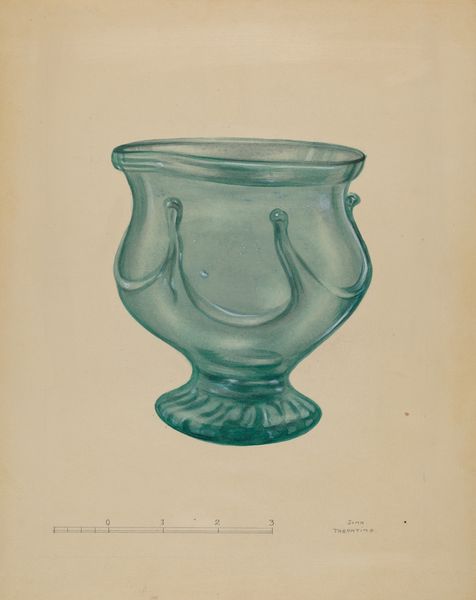
drawing, watercolor
#
drawing
#
still-life-photography
#
watercolor
#
watercolour illustration
#
watercolor
Dimensions: overall: 34.4 x 23.9 cm (13 9/16 x 9 7/16 in.)
Copyright: National Gallery of Art: CC0 1.0
Editor: This is Beverly Chichester’s "Covered Compote" from around 1940, rendered in watercolor. It has this calming, almost dreamlike quality about it because of the blending of the watercolor and the translucent colour of the compote itself. How do you interpret this piece? Curator: This image evokes, for me, the careful preservation of memories. Think of a compote—often holding treasured sweets, reserved for special occasions. What emotional significance does it hold as an artifact of a particular time? Editor: You're right, I do picture something like a grandma keeping her favourite treats safe! Curator: The green hue itself is suggestive. Green, traditionally, is a colour of growth, renewal, and sometimes envy, perhaps hinting at a desire to preserve youth, memories or happier times from fading. Do you see how this very specific green differs from, say, a forest green? Editor: Absolutely. It's much lighter, more transparent…like looking through sea glass, maybe. So the color, form, and function all contribute to this idea of cherished moments? Curator: Precisely. Think, too, of the Depression era from which it comes, where glass was a prized material. To depict such a vessel highlights its cultural value; almost as a promise of future abundance and hope. The artist isn’t simply depicting an object. Editor: This really illuminates how even a still-life can hold a multitude of stories, not just about what's there, but the history and feelings we attach to it. Curator: Indeed. Visual symbols are powerful conduits of our collective consciousness, far more than what is apparent on the surface. The ordinary, then, transforms to the extraordinary through this symbolic language.
Comments
No comments
Be the first to comment and join the conversation on the ultimate creative platform.
